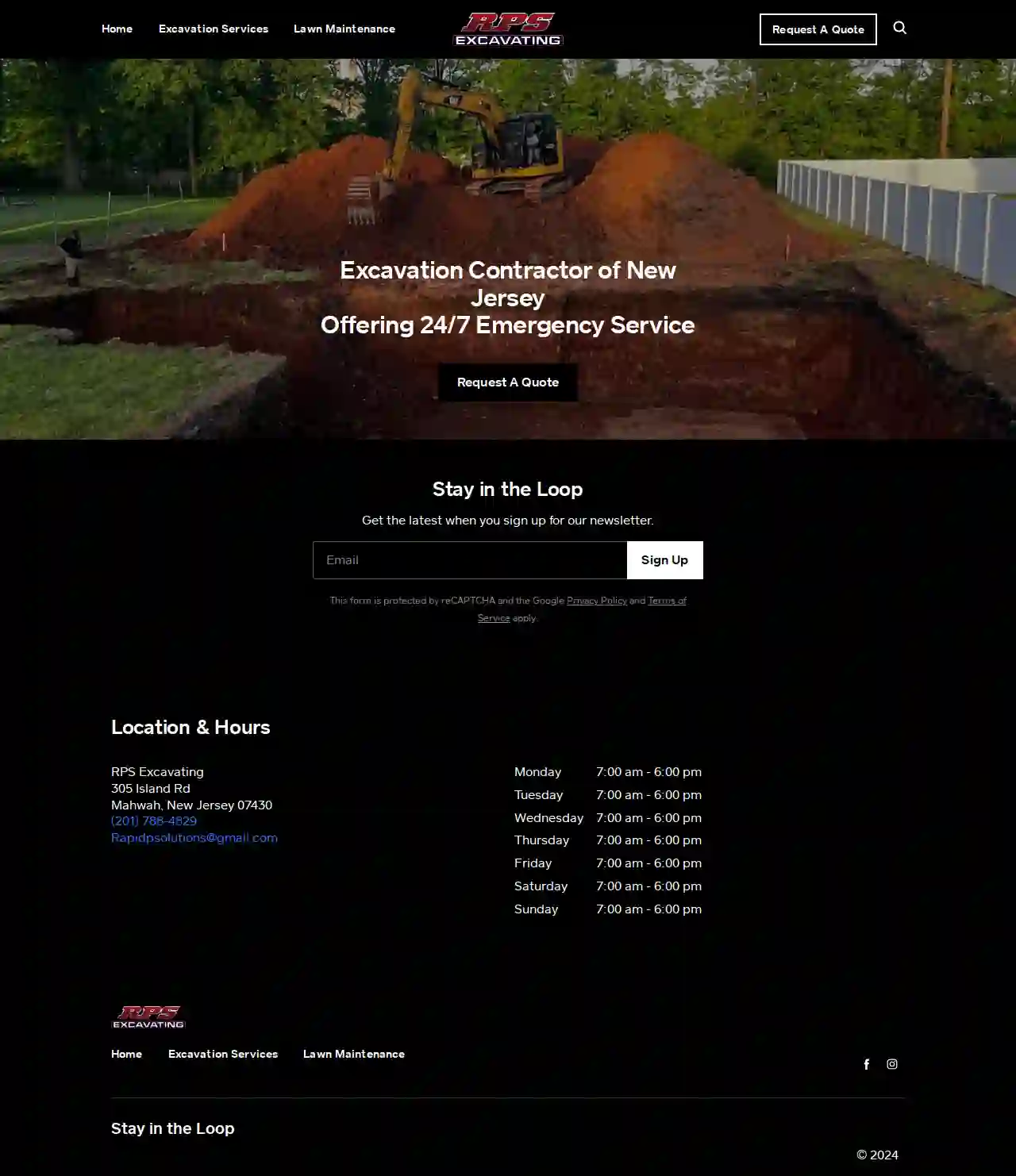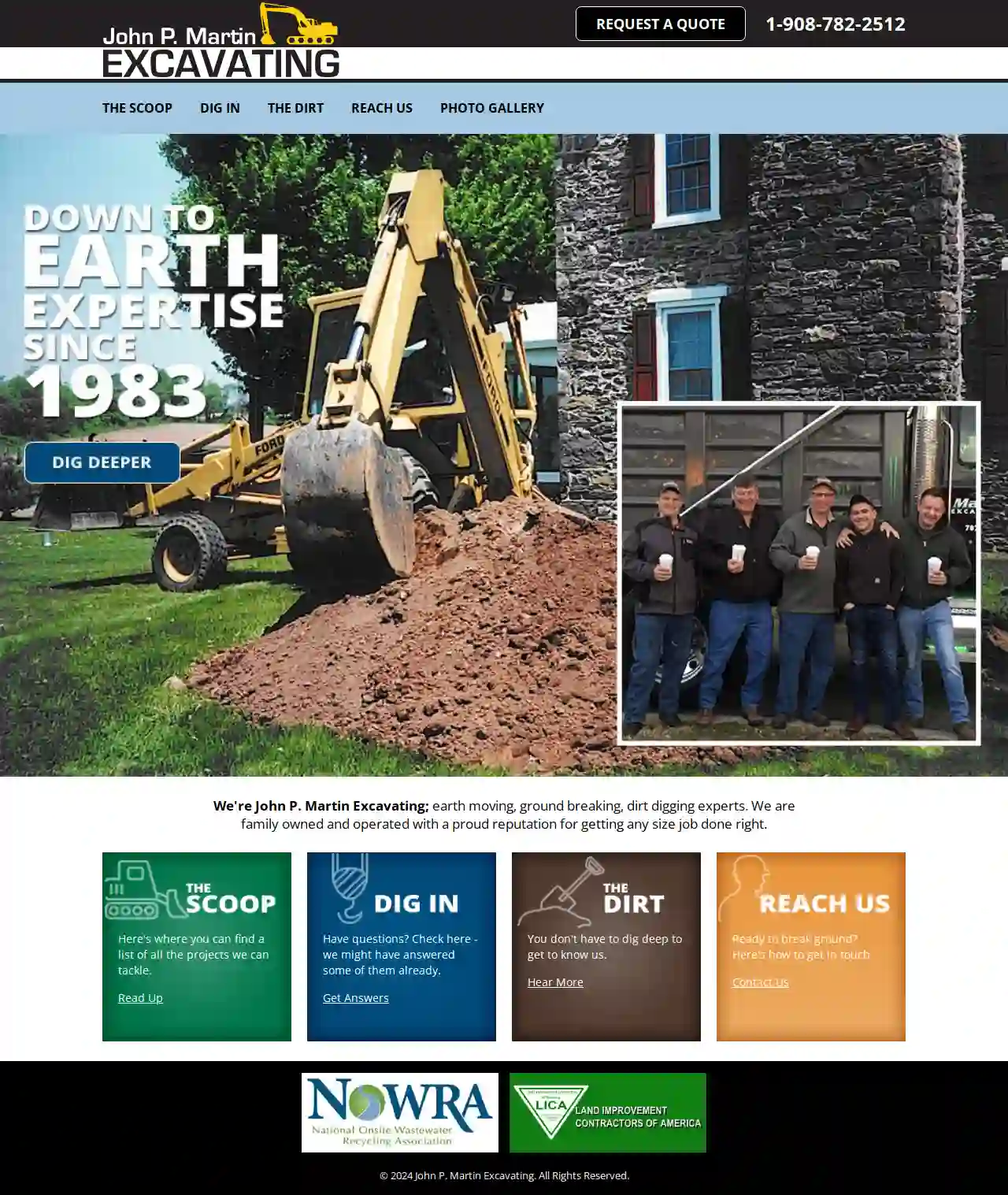Demolition Contractors Marlborough
Top Demolition Company Near Me in Marlborough
Receive 3 FREE Demolition Contractor quotes for your project today! Compare profiles, reviews, accreditations, portfolio, etc... and choose the best deal.

Ground Control Excavating Inc.
3.73 reviewsWarwick, USComplete Site Development, Excavation, & More… We provide complete land and site development services for projects of all sizes, including government, commercial, public, private, emergency, and residential projects. Ground Control Excavating, Inc. offers complete excavation services for residential and commercial projects. A premiere land-site excavating contractor, as well as, first-responder for emergencies and natural disasters in the NY area, we are committed to providing the highest level of quality to our customers throughout Orange, Sullivan, Rockland, Westchester counties and the entire Hudson Valley, NY area. GCE is based out of Warwick, NY. We provide complete site development, road development, rock hammering, rock crushing, concrete recycling, underground utilities, septic systems, drainage, top soil, and much more. We service Warwick, Monroe, Middletown, Goshen, Newburgh and the entire Hudson Valley. Experienced Construction Professionals We will work with you to achieve a common goal on time and on budget!
- Services
- Why Us?
- Gallery
Get Quote
Buraq Construction Inc
571 reviews1307 Foster Ave, Brooklyn, 11230, USAbout Us Buraq Construction Company was established to offer general construction business in New York City, and has been giving excellent service for more than 10 years. We are the specialists in luxury construction services of the highest standard and safety while keeping up the same standards and quality. Our experienced team is well-versed in navigating the complexities of city regulations and addressing violations efficiently and effectively.
- Services
- Why Us?
- Gallery
Get Quote
RPS Excavating
518 reviews10000 County Rd 12, Seaforth, N0L 1P0, USAbout RPS Excavating RPS Excavating is a family-owned and operated business with over 20 years of experience in the excavating industry. We are committed to providing our clients with high-quality services at competitive prices. We specialize in a wide range of excavating services, including: Site preparation Grading Demolition Utility installation Drainage And more! We are fully licensed and insured, and we have a team of experienced and qualified professionals who are dedicated to providing our clients with the best possible service. We are committed to safety and environmental responsibility, and we always strive to exceed our clients' expectations. Contact us today for a free estimate!
- Services
- Why Us?
Get Quote
Quiver League
531 reviews381 South 5th Street, Brooklyn, NY, 11211, USAbout Quiver League Quiver League is at the forefront of revolutionizing the construction and land surveying industry. With a commitment to excellence and innovation, we specialize in monitoring the stability of adjacent structures during Demolition, Support of Excavation ( SOE), and foundation work, along with delivering comprehensive Land Surveying services. What makes Quiver Unique? Quiver League distinguishes itself within the New York City construction industry by leveraging innovative custom software systems. These cutting-edge tools empower both our field and office teams, facilitating the completion of projects at an unprecedented pace—far surpassing the capabilities of our competitors. Our distinctive software not only ensures efficiency but also prevents overwhelm, enabling us to seamlessly manage even the most demanding workloads. Moreover, it allows us to initiate new projects and field installations with remarkable agility, responding promptly to our client's needs, even on short notice.
- Services
- Why Us?
- Testimonials
- Gallery
Get Quote
Snead's Outdoor Services LLC
4.713 reviewsLexington, NC, 27292, USWelcome to Snead’s Outdoor Services! With our background in landscaping and machinery, you can count on us to get the job done right! Our vision, our solutions, and our services are all here to help our clients. We offer an array of services with different options to execute each job. We take great pride in the work we do. Our vision is to provide our customers with the peace of mind that they are in good hands with our outdoor experts. Each new project we come across is different from the last. With the equipment and knowledge we possess of our industry, we are able to offer our customers a solution for every project, big or small. We always find a way to complete the job!
- Services
- Why Us?
- Testimonials
- Gallery
Get Quote
LONG ISLAND EXCAVATION
240 Elwood Road, East Northport, 11731, USBongiorno's Contracting Professional groundwork and excavation service from one of the leading construction excavation companies in New York. There is a lot more to groundwork than just moving earth. Our extensive experience ensures that all concerns and laws relating to the environment, civil engineering and health and safety are taken into account to give you peace of mind. Reasons for Choosing Our Company Established 70 years in business on Long Island Licensed and Insured Home Improvement Contractors No Sub-Contracting, All the work is done by our team Many Recent Job References Family Owned and Operated Using only quality materials Forms of Payments Excepted: Credit Cards (VISA, Mastercard, American Express, Discover), Personal checks, Cashier Checks. Suffolk County Home Improvement License 9615-H Our Team (Left to Right) Charles F. Bongiorno 111 - Charles F. Bongiorno Jr. - Charles F. Bongiorno Sr. Corporate Office Chuck Bongiorno As. Bs. Ms. 240 Elwood Road East Northport, New York 11731 Business Phone: (631) 368-9086 Cell Phone: (631) 848-3190 Yard: (631) 368-8123 Email: [email protected]
- Services
- Why Us?
- Our Team
- Gallery
Get Quote
John Martin Excavating
510 reviews123 Main Street, City, 12345, USAbout JPMartinez Excavating JPMartinez Excavating is a family-owned and operated business serving the greater [CITY] area. We have over 20 years of experience in the excavating industry, providing high-quality services to both residential and commercial clients. Our commitment to customer satisfaction and attention to detail has earned us a reputation for excellence in the community. We understand that excavating projects can be complex and require a high level of expertise. That's why we have a team of skilled and experienced professionals who are dedicated to providing you with the best possible service. We use only the latest equipment and techniques to ensure that your project is completed on time and within budget. Whether you need site preparation, foundation work, utility installation, or any other excavating service, JPMartinez Excavating is the company to call. We are committed to providing our clients with the highest level of service and satisfaction. Contact us today for a free estimate.
- Services
- Why Us?
- Testimonials
Get Quote
JR & SONS EXCAVATING
51 reviewsEden, USAbout JR & Sons Excavating JR & Sons Excavating is a family-owned business with over 30 years of experience in the fields of Excavating and Landscape Architecture. We are dedicated to providing our clients with the highest quality service and workmanship. Our team is equipped with the best equipment and knowledge to safely and effectively complete any project you desire. Owner and Operator, Joe Chimera, focuses great emphasis on every individual's needs so that their project will be executed to the highest standards. Joe and his team are committed to exceeding your expectations and delivering exceptional results. We take pride in our equipment and utilize top products in our industry to ensure your project is completed efficiently and to the highest standards.
- Services
- Why Us?
- Gallery
Get Quote
CW Earthworks
52 reviews1614 Grimball Rd Ext, Charleston, 29412, USCW Earthworks, LLC We are a landscape construction company with the vision of a green future. Our mission is to operate from the position that Earth is Life. We strive to meet the needs of all customers while serving Mother Nature best in all situations. We have the ability to complete a multi-faceted project for residential and commercial clients from start to finish. About Us CW Earthworks began with the green vision of a small company equipped to complete big jobs. The Lowcountry dirt and salt is in our blood. Our team has a "generalist" mindset, and we use our broad skillset to efficiently achieve the desired vision for every job. Time in Nature defines our lives and work is also play. We value our community and we approach every situation as a new opportunity. Hire us to improve your land and take your vision to the next level! Thank You
- Services
- Why Us?
- Testimonials
- Gallery
Get Quote
RND Construction
54 reviewsLocust Grove, Virginia, USServing Fredericksburg, VA & Surrounding Communities for Over 40 Years At RND Construction, we offer top tier excavation, land clearing and commercial construction services. We work diligently to meet our customer’s needs while adhering to industry standards in quality and safety. We are committed to completing our work with diligence and with extreme attention to detail. RND Construction is your top choice when it is time for your next job. Contact us today, our team is waiting to assist you! Expert & Professional Services Here at RND Construction we provide comprehensive services for homeowners and business owners across Fredericksburg, Virginia and the surrounding communities. We are experts in our field and are dedicated to providing superior workmanship and customer support. With over 40 years of professional experience, customer satisfaction is always our top priority.
- Services
- Why Us?
- Testimonials
- Gallery
Get Quote
Over 22,076+ Excavation Contractors registered
Our excavation pros operate in Marlborough and surroundings!
ExcavationHQ has curated and vetted the Best Excavation Contractors near Marlborough. Find a top & reliable business today.
Frequently Asked Questions About Demolition Contractors
- Enclosure: Sealing off the asbestos-containing material to prevent fiber release.
- Encapsulation: Coating the asbestos-containing material with a sealant to bind the fibers.
- Removal: Carefully removing the asbestos-containing material and disposing of it safely.
What is a demolition bond?
How can I tell if my building contains asbestos?
Can I do demolition myself?
What are the different methods of asbestos abatement?
What is a demolition bond?
How can I tell if my building contains asbestos?
Can I do demolition myself?
What are the different methods of asbestos abatement?
- Enclosure: Sealing off the asbestos-containing material to prevent fiber release.
- Encapsulation: Coating the asbestos-containing material with a sealant to bind the fibers.
- Removal: Carefully removing the asbestos-containing material and disposing of it safely.